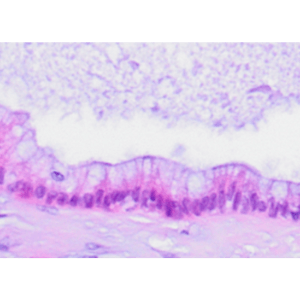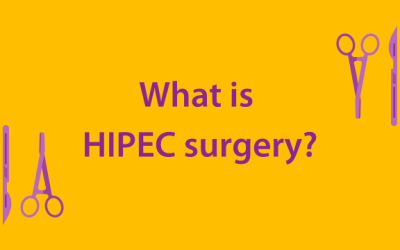
Written by the Pseudomyxoma Survivor editorial team
Updated March 30th, 2023
References
No evidence of disease
No evidence of disease means that tests are not detecting any cancer in the body.
HIPEC
Hyperthermic Intraperitoneal Chemotherapy
Heated chemotherapy, delivered directly into the abdomen, after complete cytoreduction. If the surgeons are able to remove the all the tumours, you may be given HIPEC.
Hyperthermic means that the chemotherapy solution used during the procedure is heated to a higher-than-normal temperature, typically around 41-43°C (105.8-109.4°F). This is usually Mitomycin C. This is put directly in your abdomen while you are in theatre. This elevated temperature is maintained throughout the duration of the procedure, usually around 90 minutes, to enhance the effectiveness of the chemotherapy drugs and to target cancer cells in the abdominal cavity. HIPEC will penetrate tumour nodules up to 2.5mm in size. The combination of chemotherapy drugs and hyperthermia can help to destroy cancer cells (increased cytotoxicity) while minimizing damage to healthy tissue.
Chemotherapy given into the abdomen during surgery is called intraoperative chemotherapy.
Complete cytoreduction
Complete cytoreduction is the complete surgical tumour removal. This is a long operation which takes about 10 hours to complete and includes:
- removal of the right hemicolon
- spleen
- gall bladder
- greater omentum and lesser omentum
- stripping of the peritoneum from the pelvis and diaphragms
- tripping of tumour from the surface of the liver
- removal of the uterus and ovaries in women
- removal of the rectum in some cases
This is also referred to as a full peritonectomy. The goal is to remove tumour nodules down to 2.5mm.
You might also want to read…
What is HIPEC surgery?
HIPEC is a cancer treatment that involves surgery and heated chemotherapy. It’s used for advanced abdominal cancers like pseudomyxoma peritonei.
Just how rare is PMP?
PMP is identified by Eurordis as a rare or “orphan” disease (one which affects less than 1 in 2000 people).
What to pack for your hospital stay
One of the questions we get asked a lot and features heavily in our support groups is “What do I need to bring into hospital with me?”.



